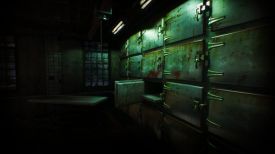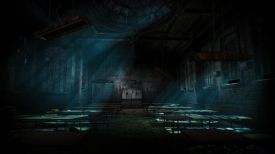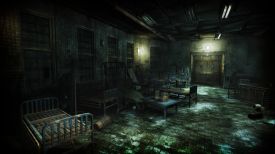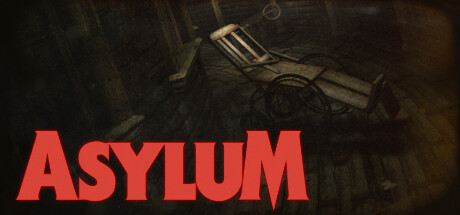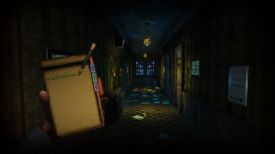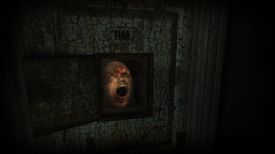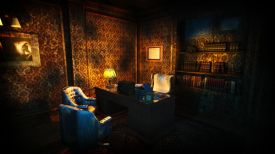|
By flotsam
Asylum
Senscape
Many years in the making (it was
originally announced in 2010), this “spiritual successor” to the 2006
horror-mystery Scratches sucked me in and (dare I say) scratched
a few of my itches.
The game takes place in the
Hanwell Mental Institute, at which you arrive by car after a rather good
opening scene and set of credits. There is a Hammer Horror vibe to the
start that sets a good tone.
When your car ride concludes and
you get to take control, it's point and click all the way. It utilises
node to node progression through the gaming environment, which works
fine, especially as you have complete visual freedom at every node. The
particular scene pivots around a fixed central point as you move the
mouse about, and a little pointing finger will indicate where you can
further move. Hotspots (which you can highlight with the Space bar) will
enable you to explore a scene more deeply, and the particular icon
generated will indicate what can occur at that spot.
When you first enter the asylum,
take the time to converse with the receptionist. It will help settle you
into the game mechanics. Two key elements are your journal (right mouse
click) and your record book (Esc key). The former is an all-purpose
repository of conversation topics, objectives and inventory items,
whilst the latter collects documents, memories and transcripts of
conversations. A pop-up icon will tell you something has been added to
one or the other, and it's worth playing around in them (and turning all
the pages in the record book) to best appreciate how they operate.
Even a cursory glance in the
record book will indicate there are a large number of things to gather,
and while all of it may not be essential in order to complete the game,
the bits and pieces tell the backstory of things that went on here.
Which is rather why you are there. Something has drawn you back, and you
hope to find answers.
Visually the game looks good,
and combined with the ambient sound and the minimalist soundtrack (which
knows when not to play) a suitably less than wholesome atmosphere is
created. It isn’t a scary game, but grim things happened, and its
tonally dark throughout. All the more so as you progress, gaining access
to new areas and uncovering past secrets.
You will come across a few other
characters, some of them patients others of them not. You can (and
should) converse with those whom you can, using your notepad to do so.
The contents are organised under different tabs, and you pick an entry
with your pencil to ask about it. Don’t think though that you are
limited to just asking about things in the Topics tab. Entries in the
other tabs are fair game, and whether or not something is an essential
conversation (and some things certainly seem to be) being chatty can be
informative.
Conversations are voiced but
your characters thoughts (e.g., “there is nothing in there that
interests me”) are silent and read. I thought it worked well – why would
he speak his thoughts out loud? You might hear voices as well in the
visions and cutscenes that occur.
Puzzling is largely of the
finding and using the right item kind, but there are a few out and out
puzzles. Some also randomise, one early on involving records being a
case in point. I thought that puzzle was particularly good, putting
together bits and pieces from various locations.
It isn’t a hard game, and where
I tended to be stuck was sorting out what I should be doing next. You
will need to go back and forth through the asylum, by design as well as
perhaps in search of what to do, and the maps you will find throughout
the asylum will help in that regard. You will also build up your own
sense of how to get from here to there, and while I suspect I took the
long way round more than once, I was confident that a known route could
get me from where I was to where I wanted to be.
The tale gets more fantastical
as you go, and I won’t spoil any of it by saying anything more. How you
feel about the end will be up to you. It came as a surprise to me, as
much because I was sure my character knew enough to result in a
different ending. Clearly not!
The pace is measured, which I
enjoyed. Walk and explore, and walk and explore some more. Find and do
some stuff and do that again. Even when being pursued in a sequence
towards the end there was nothing frenetic about it. Its an aspect I
like about about many adventure games.
Certain scenes and locations are
a tad confronting, this being an asylum and all, and there is one
particularly grisly sequence involving a cadaver. And as the Steam page
says “some texts in the game include references to physical abuse,
sexual assault, and self-harm.” You should factor that into your choice
about playing.
Character modelling is a bit
wooden but nothing off-putting. Voice acting is more than fine.
When the little spanner/wrench
icon appears, right clicking will bring up your hand with a held
inventory item. Scroll with the mouse wheel to run through the items you
possess, and then left click to try and use. Tweak some settings and
save at will, multiple save points being available, and the game will
pick up at the very point you left off.
I had a good time in this
asylum.
I played on:
OS:
Windows 11, 64 Bit
Processor: Intel i7-9700K 3.7GHz
RAM:
Corsair Dominator Platinum RGB DDR4 32GB
Video
card: AMD Radeon RX 580 8192MB
GameBoomers Review Guidelines
March 2025
design copyright© 2025
GameBoomers
Group
 GB
Reviews Index GB
Reviews Index |
